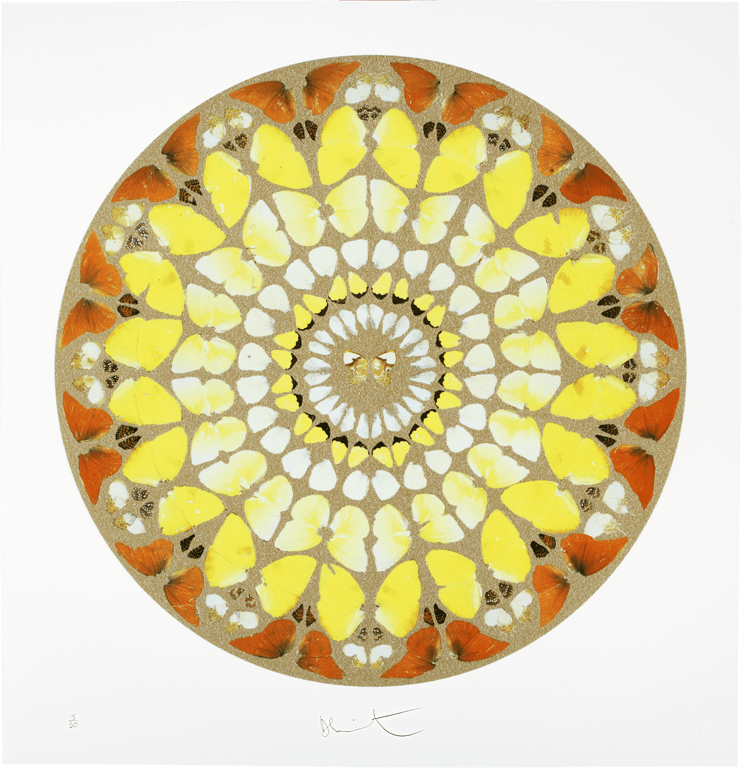
Damien Hirst (b. 1965)
Damien Hirst is one of the most renowned and avant-garde artists of our time. He is a multimedia artist who works in such ranging fields as painting, drawing, printmaking, sculpture, conceptualism, and installation. His works question life and death, and his presentations often provoke controversial responses.
Born in Bristol, England, Hirst became fixated on death and life’s symbiotic relationship at a young age. The teenage Hirst would visit Leeds Medicine School and spend hours in the anatomy department drawing cadavers. It has been noted that Hirst said that “death can scare you, or it can ignite a vigor for life.” Growing up in Leeds, he then moved to London where he worked in construction for some time before attending Goldsmiths College in 1989, where he obtained his BFA. Not long after, he won the prestigious Turner Prize in 1995.
In a classical sense, Hirst’s themes resonate with the centuries of artists before him—tackling themes of life and death, science and religion, beauty and ugliness—however, it is his contemporary take on the subjects that have garnered him international notoriety. Hirst couples classical and romantic sensibilities with modern aesthetics, like minimalism, to create a new visual vocabulary for these universal themes.
Spots, spins, butterflies, skulls, sharks, and cows, are Hirst’s iconic imagery. His spot paintings, consist of randomly colored spots in structured rows and columns. He says that these spots “pin down the joy of color.” He also works with butterflies to create dazzling, yet distressing, mosaics, sometimes using diamonds to complement their gemstone colored wings.
Other notable works are, “The Physical Impossibility of Death in the Mind of Someone Living”, a 14 foot tiger shark, forever floating in formaldehyde, which debuted at Saatchi’s Young British Artist exhibition in 1992. Hirst and the YBAs would dominate the British art scene for most of the 90’s. “For the Love of God” is a memento moriof a human skull that he cast in platinum with 8,601 diamonds. Such works illicit varied responses from critics and viewers to this day.
Hirst has works in the collections of The Metropolitan Museum of Art, the Tate Modern, the Museum of Modern of Art, New York and The Broad Art Foundation, to name a few, and has exhibited on behalf of Britain at the Venice Biennale in 1993 and 2003.
